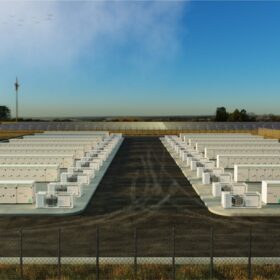“DOE’s solar guidebook is a must-have reference for local governments interested in using proven strategies to speed up going solar and cut energy bills for their residents,” said US Secretary of Energy Jennifer M. Granholm. “From reducing solar permitting delays and other soft costs to expanding solar benefits to renters and other non-traditional solar users, we’re providing more localities with the tools to succeed in delivering cheaper, cleaner power while generating good-paying local jobs.”
Since the guidebook was originally published in 2009, solar power costs have decreased 80% and federal incentives have spurred dramatic increases in solar deployment. However, soft costs like unnecessary paperwork, red tape, and other burdensome requirements increase costs and discourage solar companies from moving to an area. By streamlining these requirements and taking other steps to encourage solar development, DOE is supporting communities to become “open for solar business.”

DOE’s solar guidebook encourages local governments to adopt SolarAPP+ (Solar Automated Permit Process), a tool that helps to speed approval for residential solar permits. DOE’s National Renewable Energy Laboratory released results from its SolarAPP+ tool pilot in five communities in California and Arizona. The results show that SolarAPP+ reduced the average permit review time to less than one day, enabled projects to be installed and inspected 12 days faster, and saved the pilot communities over 2,000 hours of staff time.
The guidebook also describes the SolSmart 60 campaign, which aims to get 60 new communities designated as SolSmart Gold, Silver, or Bronze for making it faster, easier, and more affordable to go solar. So far, 21 local communities have earned distinction for their solar deployment practices since September 2021. The program offers free technical assistance to help any municipality, county, or regional organization remove obstacles to going solar and reduce the soft costs that can hold back growth. SolSmart’s team of national experts in solar energy and local government have helped these jurisdictions implement best practices and take decisive action to encourage the expansion of solar energy.
(Read: “SolSmart targets pricey solar soft costs“)
Local governments can also receive free technical assistance to develop community solar programs through the National Community Solar Partnership, which is a coalition of community solar stakeholders working to expand access to community solar, particularly to those with low-to-moderate incomes, renters, and other community members for whom traditional rooftop solar is unavailable.
The guidebook also answers common questions, just a few of which include:
- How can I help my community develop a solar deployment plan?
- Who should be involved in developing a solar deployment plan?
- What should my community consider when setting local solar targets?
- What actions can my community take to ensure equity in the local solar market?
- Can solar play a role in my community’s resilience, sustainability, and climate planning?
This content is protected by copyright and may not be reused. If you want to cooperate with us and would like to reuse some of our content, please contact: editors@pv-magazine.com.









“This third edition contains nearly 40 case studies from around the US that show field-tested approaches to reducing solar market barriers.” Hmmm … does it show how to reduce the NEM 3.0 market barrier? LOL